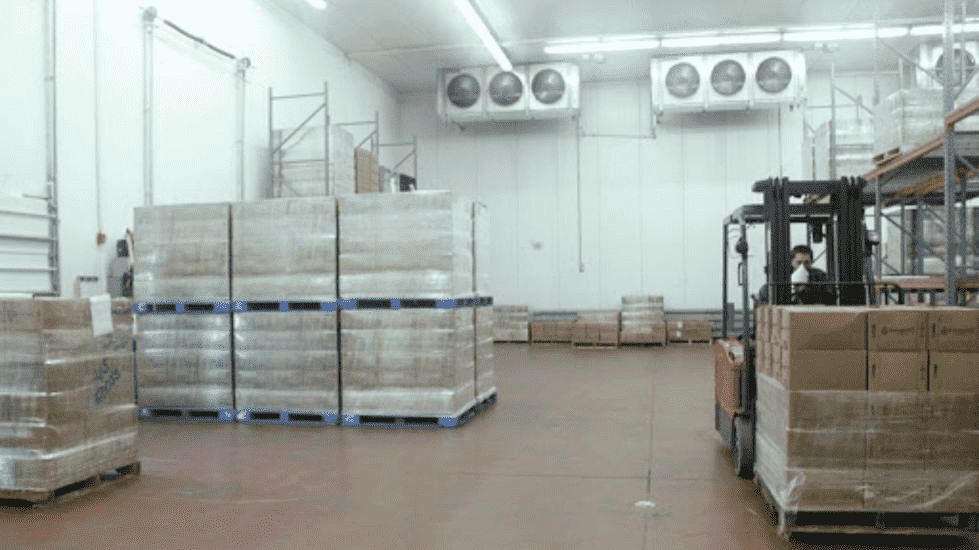Warehousing Industry Report:
India’s industrial and warehousing sector reported a robust absorption of nearly 11 million square feet, with tier-I cities driving 77% of the demand, according to international real estate advisory firm Savills India.
The period saw a fresh supply of 12.4 million sq ft, of which tier-I cities contributed 74%. The market is experiencing a surge in projects with top-notch Environmental, Health, and Safety (EHS) standards, leading to an increased percentage of grade-A supply across cities.
Grade-A space constituted 52% of both total absorption and supply in the market, signaling a growing appetite for premium space.
Delhi-NCR, Mumbai, Bengaluru, Chennai, and Pune were the top contributors to India’s industrial and warehousing segment, with Delhi-NCR leading at a 19% absorption rate, followed by Mumbai at 14%. Bengaluru and Chennai registered absorption rates of 9% and 8% respectively, while tier-II and tier-III cities accounted for the remaining 23% of total absorption.
We believe that the industrial and logistics sector is poised for significant growth in 2023, with a projected absorption of over 40 million sq ft. This demand is expected to be driven by emerging Tier-II and Tier-III cities, a growing need for urban warehousing, and a major transformation in the Indian manufacturing sector.
The 3PL sector has been a major contributor to the growth of the warehousing industry, accounting for 40-50% of the total demand over the last 2-3 years. The manufacturing sector has also gained momentum, with increased activity supported by various incentive schemes, including the Performance Linked Incentives (PLI).
In Q1 2023, the 3PL sector continued to be the driving force behind warehousing demand, accounting for 40% of total absorption. The manufacturing sector followed closely behind, accounting for 23%, with the retail sector at 11% and FMCG/FMCD at 7%.

Demand for warehouses in Pune:
Pune’s industrial and warehousing demand is expected to clock an all-time high of 7.5 million sq ft in 2022, a report by JLL said on April 21. The high demand is because of the renewed focus on the manufacturing sector as well as the buoyancy of E-commerce and 3PL players, which is expected to propel demand further.
The current stock stands at 33.2 million sq ft in 2021 and the forecasted supply is close to 60 million sq ft until the end of 2025, JLL said.
Pune witnessed peak demand of 6.5 million sq ft in 2021, indicating a clear resurgence of the economy as well as customer sentiments, led by manufacturing, 3PL and e-commerce. Additionally, the city witnessed increased interest from global investors and funds, evaluating further investments. Projected growth in demand is around 15-16 percent in 2022 to take it to 7.5 million sq ft by the end of 2022, it said.
At present, the monthly rentals are ₹17-30 per square feet in the city. As per the JLL India report, Pune has been a manufacturing hub since the 1960s. The city has attracted several large multinational corporations, focused on auto, auto and ancillaries, electronics, white goods, and some of the newer industries like Electric Vehicles (EVs) and renewables.
Further, the report outlined that the supply is predominantly concentrated in the northern part of the city, namely Chakan and Talegaon, and the eastern belt starting from Phulgaon to Ranjangaon.
It needs to be noted that Chakan and Talegaon account for almost 70% of the industrial and warehousing supply.
Pune’s supply is expected to earmark 60 million square feet by the end of 2025.
Top Warehouse Occupiers in Pune
Occupier | Industry | Warehouse Cluster |
Amazon | E-commerce | Chakan – Talegaon warehousing cluster |
DHL | 3PL | Chakan – Talegaon warehousing cluster |
First Cry | E-commerce | Chakan – Talegaon warehousing cluster |
Whirlpool | FMCD | Ranjangaon warehousing cluster |
KSH Logistics | 3PL | Chakan – Talegaon warehousing cluster |
The total demand for storage space from the e-commerce segments has increased over the years and was boosted further by the lockdown. However, their leasing strategy has shifted in recent months, with businesses increasingly seeking short-term contracts. Businesses are considering realigning their supply chains to include numerous small fulfilment centres located across the city rather than relying on a single warehouse to serve the entire city in the future.
